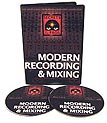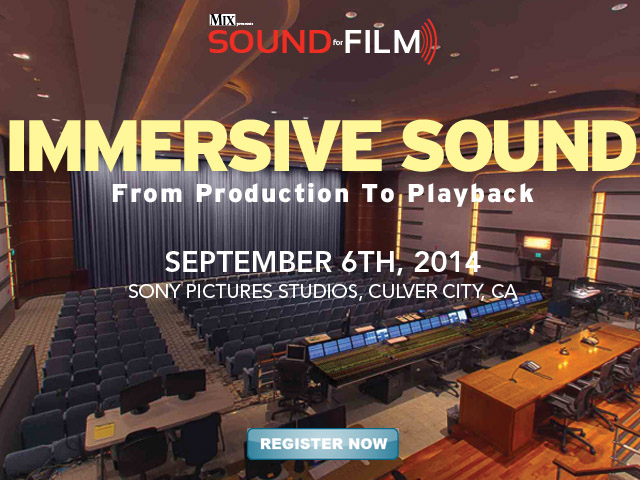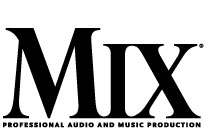Field Test: A-Designs Audio Pacifica Microphone Preamp
Jun 1, 2006 12:00 PM, BY JOE HANNIGAN
HIGH-END STEREO VERSION OF A '70S CLASSIC
Most Popular
advertisement
Polls
Mix Regional
 The Mix Regional section for Mix's July 2014 issue focuses on Atlanta. Send us your studio news: updates, sessions, new rooms, club performances and installations. Let the Mix audience know what is going on! Send photos and descriptions to mixeditorial@nbmedia.com.
The Mix Regional section for Mix's July 2014 issue focuses on Atlanta. Send us your studio news: updates, sessions, new rooms, club performances and installations. Let the Mix audience know what is going on! Send photos and descriptions to mixeditorial@nbmedia.com.
For recording engineers who are in a retro state of mind, A-Designs Audio has created a stereo preamp that emulates the tonal character and quality of the original 1970s-era Quad Eight Ventura console. Pete Montessi and Jon Erickson of A-Designs Audio examined and ultimately re-created the best part of this console: the QE preamp. Working with Tom Reichenbach of Cinemag (son of the original designer of the Quad Eight transformers), Montessi and Erickson spent more than two years testing and listening to prototypes in the lab and in studios with other engineers.

Aside from a newer onboard power supply, the Pacifica's look and feel strongly resemble the original Quad Eight, which (with Neve and API) was one of the three big consoles popular during the '70s.
THE COOL, BLUE PACIFICA
The Pacifica is a no-nonsense, solid-state stereo (dual-mono) preamp that meets all the professional requirements of a stand-alone, single-space, rackmounted unit. Input impedance is 600 ohms at 400 Hz, with a gain range of 72 dB and a noise floor of -128 dB (EIN). Stated frequency response is 9 to 101k Hz, and distortion is rated at less than 1 percent. Each independent channel features custom input and output transformers, level controls, -20dB pad switch, 48V phantom power switch (with red LED), phase switch and a hi-Z ¼-inch jack for direct input. A cool blue LED power indicator tells you the unit is on and ready for business.
Weighing in at a serious 11 pounds, the large toroidal power transformer adds considerable heft to the package. The construction is rock-solid, as it has to be for something this heavy.
A quick look inside shows the attention to detail that went into manufacturing this preamp. It's great to see I/O transformers tightly locked down and wires strapped and dressed neatly out of harm's way, with all heavy-use components (XLRs, etc.) securely fastened to the chassis. This kind of construction makes the unit robust enough to take on live remotes and to use in any studio setting. It's also attractive enough (with its decidedly “West Coast” look and styling) to show off in any setting.
MAKING WAVES
On several recent classical and jazz recording projects, the Pacifica excelled in a variety of ways. For orchestral recording with a pair of DPA 4006 TL microphones (read the mic review at www.mixonline.com), the Pacifica delivered an impressive level of effortless detail and lots of gain as compared to other preamps in this class. When I initially experimented with the levels, I ran without the pad and found the output levels almost too high to be useful (no distortion, but simply lots of very hot level). I reluctantly engaged the -20 pads (without any audible clicks, either — always a good thing) and found a bit more headroom without sacrificing the gain structure. Noise was seemingly nonexistent, and the orchestral tracks absolutely sparkled.
In use for a recent Mozart tribute with pianists Uri Caine and Charles Abramovic at Philadelphia's Kimmel Center for the Performing Arts, the signal from a pair of Audio-Technica 4050s placed above a Steinway Model D was routed through the Pacifica. The -20dB pad was, of course, required here, resulting in a rock-solid stereo image, crisp, detailed highs and surprisingly articulated mids. The A-T mics with the Pacifica created a sizzling combination: no coloration of any sort, with seemingly endless gain and no clipping.
Next up I used the Pacifica in dual-use mode for a World Café Live (WXPN FM) event with Philadelphia Orchestra solo bassist Hal Robinson using both a bridge pickup on one channel and a microphone (MXL V6) in the other. The dual, but independent, channel implementation here was ideal: clean, solid pickup for the bass DI, with all the articulation and detail in channel 1, plus the rounder, warmer sound of a cardioid mic in front of the instrument in channel 2.
In the studio, I put the Pacifica through a variety of tests, including an acoustic 12-string guitar's pickup going DI into one channel and a Neumann KMi84 for a more natural blend. As with the acoustic bass recording, I got a lot of sound — plenty of sturdy mids and lows with plenty of air on top.
BACK ON DRY LAND
The Pacifica exhibits just enough color in the low and midrange to give recordings a great character, but not at the expense of the top end. That combination makes for a very musical preamp that works on a wide variety of sources. Any mic I ran through it sounded its best, and that's saying a lot for any preamp out there. There are many exotic flavors and colors available with today's crop of tube preamps, but the ultraclean, no-compromise sound of the Pacifica (at $1,995 MSRP) is something every studio or location recording engineer should have.
A-Designs Audio, 818/716-4153, www.adesignsaudio.com.
Joe Hannigan runs Weston Sound & Video in Philadelphia.
Acceptable Use Policy
Modern Recording and Mixing

This 2-DVD set will show you how the best in the music industry set up a studio to make world-class records. Regardless of what gear you are using, the information you'll find here will allow you to take advantage of decades of expert knowledge. Order now $39.95
Mastering Cubase 4
Electronic Musician magazine and Thomson Course Technology PTR have joined forces again to create the second volume in their Personal Studio Series, Mastering Steinberg's Cubase(tm). Edited and produced by the staff of Electronic Musician, this special issue is not only a must-read for users of Cubase(tm) software, but it also delivers essential information for anyone recording/producing music in a personal-studio. Order now $12.95







 Delivered straight to your inbox every other week, MixLine takes you straight into the studio, with new product announcements, industry news, upcoming events, recent recording/post projects and much more.
Delivered straight to your inbox every other week, MixLine takes you straight into the studio, with new product announcements, industry news, upcoming events, recent recording/post projects and much more. 
